Few things in the garden are more mesmerizing than the Italian heirloom plant known as Romanesco broccoli.
The chartreuse bud looks like it was sculpted by a fine artist with its distinctive spiraled pinnacles. It’s an edible flower (just like heads of broccoli or heads of artichoke) that we eat as a vegetable.
Romanesco belongs to the genus Brassica, which is unusual in that instead of individual species, it bundles all of its members (such as broccoli, cauliflower, Brussels sprouts, cabbage, kale, mustard greens, kohlrabi, and turnips) into one species, making them all Brassica oleracea.
(If you remember high school science, plant taxonomy goes like this: kingdom, order, family, genus, species, and sometimes, subspecies.)
That means Romanesco broccoli (which is sometimes called Romanesco cauliflower) is neither a broccoli nor a cauliflower, though it’s often grouped botanically with cauliflower (Brassica oleracea var. botrytis).
It is its own cultivar and by the looks of it, this head-turning vegetable is truly in a class of its own (in more ways than one!).
Disclosure: If you shop from my article or make a purchase through one of my links, I may receive commissions on some of the products I recommend.
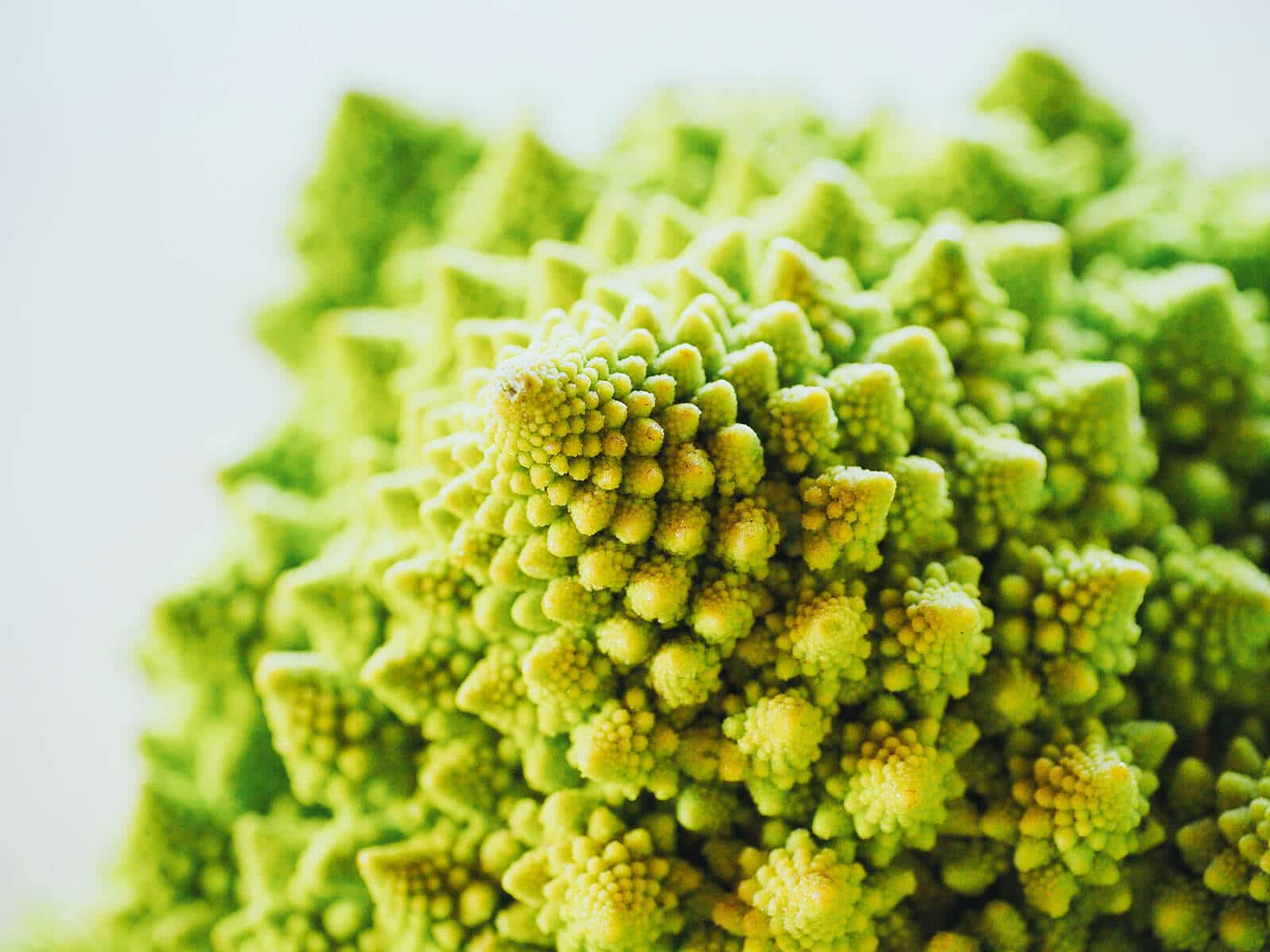
The history of Romanesco broccoli
Romanesco tastes like a nuttier and crunchier version of cauliflower, and in my opinion, is more flavorful than either broccoli or cauliflower.
It dates back to the 15th or 16th century, where it was thought to originate in the Lazio region of Italy. (Rome, from which the plant gets its name, is the capital of Lazio.)
Called broccolo romanesco or cavolo romanesco by the Italians, it was grown in the countryside and didn’t make its way to the United States until the 20th century.
Botanists believe that Romanesco broccoli was developed through cross-breeding, and its naturally occurring pattern was reinforced by human selection over centuries. The cultivar is both an heirloom and a hybrid, depending on the specific seed you have.
Read more: The Stories Behind Heirloom Seeds
Several varieties of Romanesco broccoli exist, and some farmers have crossed open-seeded varieties with each other to produce hybrids that are faster growing.
Baker Creek Heirloom Seeds and Botanical Interests both carry an open-pollinated heirloom variety, and a few seed catalogs carry F-1 hybrids like “Veronica” Romanesco brooccoli.
Recommended reading: Decoding Your Seed Catalogs: What All Those Weird Terms and Abbreviations Mean
How to find the Fibonacci fractal in Romanesco broccoli
Romanesco broccoli is an intricate work of art and a mathematical marvel. Did you know it’s a beautiful example of a Fibonacci fractal in the natural world?
One year I picked my Romanesco a few days too late, and its famous spiral had already started to unravel, resembling an average cauliflower.
But the following year, I remembered to harvest it earlier (and thankfully, it weighed much less than the 25-pound Broczilla that I grew many years back).
Did you know: The part of the broccoli that we typically eat—what we call the “head”—is actually the flower bud of the plant (although broccoli leaves are just as edible and delicious, and can be cooked like any other green).
Worth a read: 11 Vegetables You Grow That You Didn’t Know You Could Eat
The tight clusters that form the head are called florets (or small flowers).
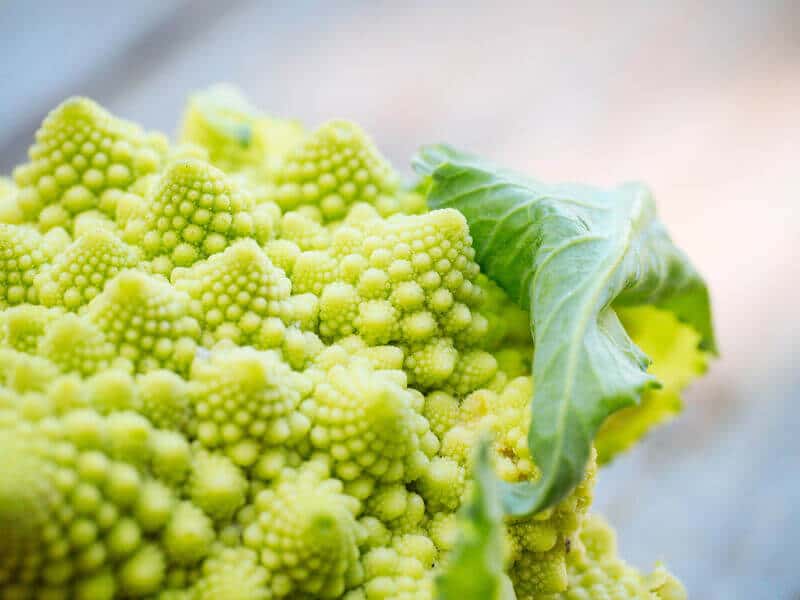
On a Romanesco, the whole head is made up of smaller heads that mimic the shape of the larger head, and each of those smaller heads is made up of even smaller, similar heads. It keeps going, and going, and going…
You’re looking at a natural fractal—quite simply, a detailed pattern that repeats itself ad infinitum. (But since a head of broccoli can’t go on forever, math purists would call this an approximate fractal, since it has a termination point.)
If you break off a floret, it looks like a mini broccoli with its own mini florets.
Fractals are fascinating in that way; no matter which part of the fractal you zoom in on, it will be an identical version of the bigger picture.
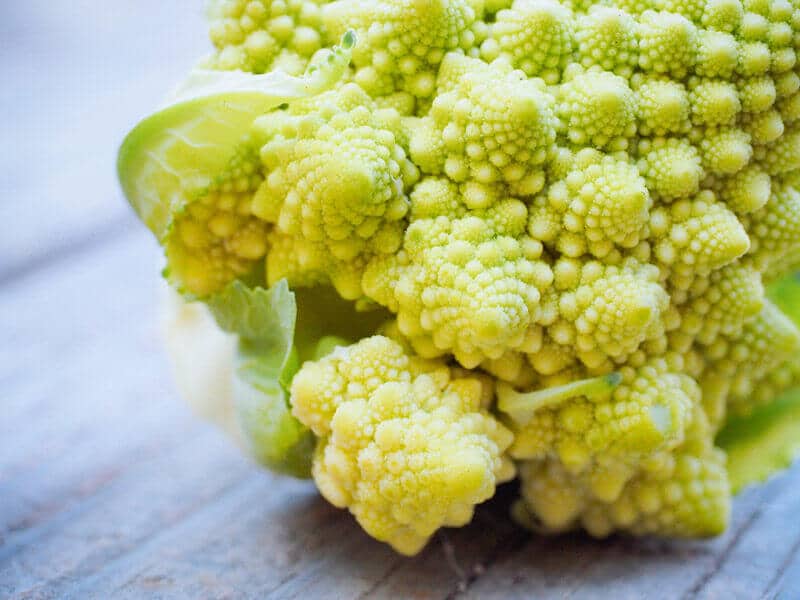
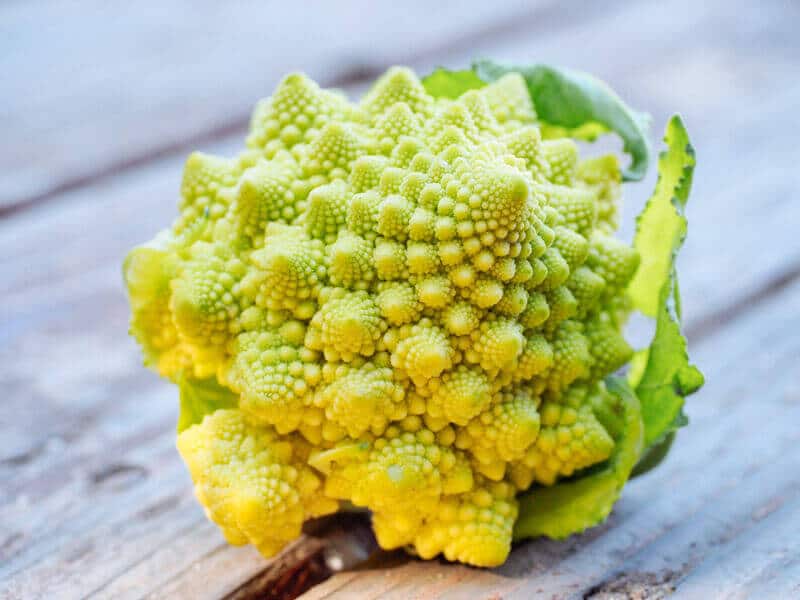
If you ever have the chance to study a tight head of Romanesco up close, you’ll see a spiral emanating from the center point, along which all the smaller florets are arranged.
This is the Fibonacci spiral, a series of arcs whose radii follow the Fibonacci sequence.
You remember the Fibonacci sequence from school? Where each number equals the sum of the previous two numbers: 0, 1, 1, 2, 3, 5, 8, 13, 21, 34, and so on.
If you count the number of spirals in one direction, and then count the number of spirals in the other direction, they will be—without fail—consecutive Fibonacci numbers. Every time.
Intrigued? Confused yet? I know I was. I’ll let this math geek explain it better with a visual.
If you don’t have a head of Romanesco to test out this mathematical wonder, try it with other self-similar forms from your garden. The spiral patterns in sunflowers, pinecones, and pineapples are all examples of Fibonacci sequences in nature.
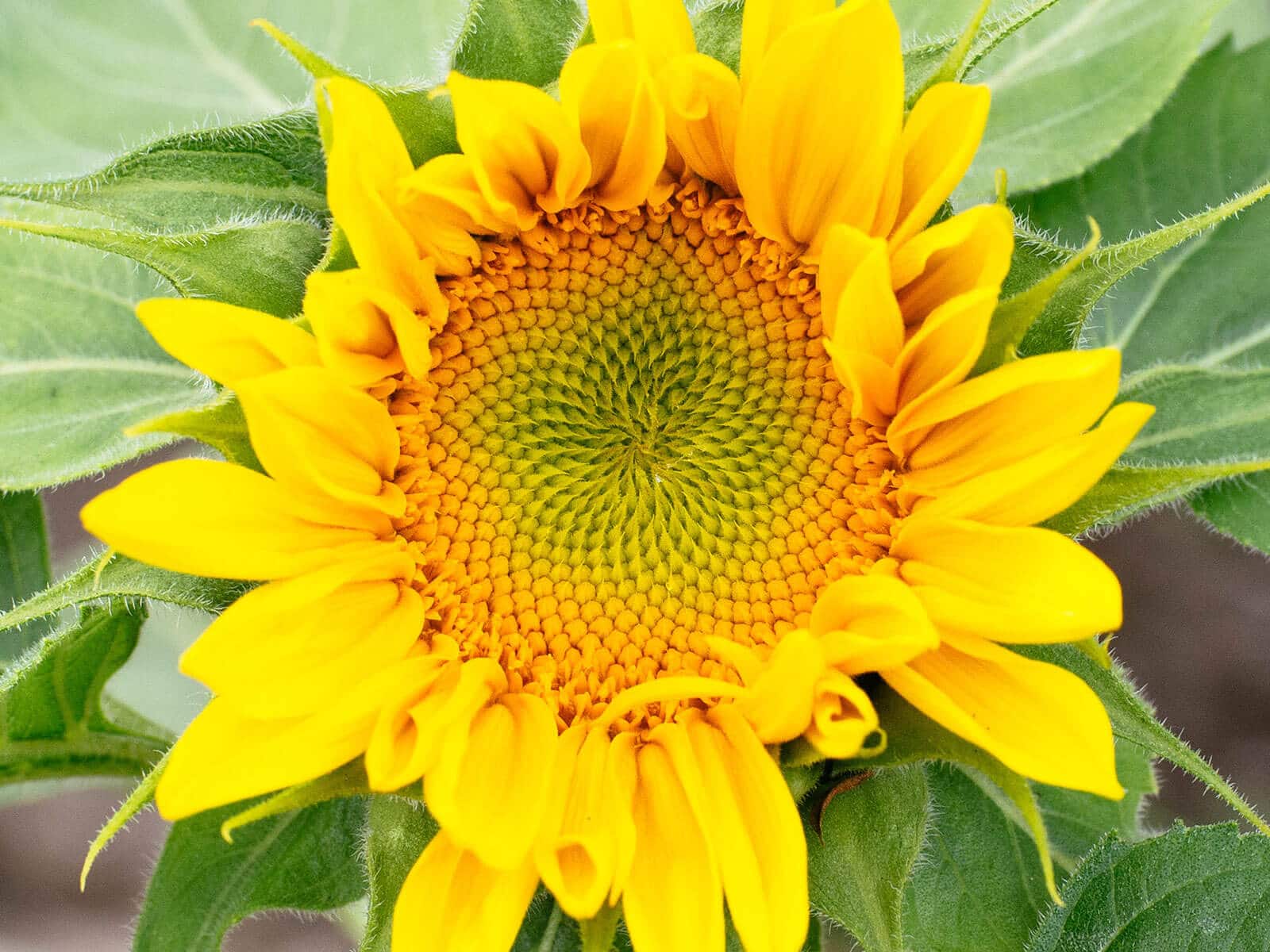
Isn’t it amazing how something so precise like a math formula can occur in something so organic like a head of broccoli?
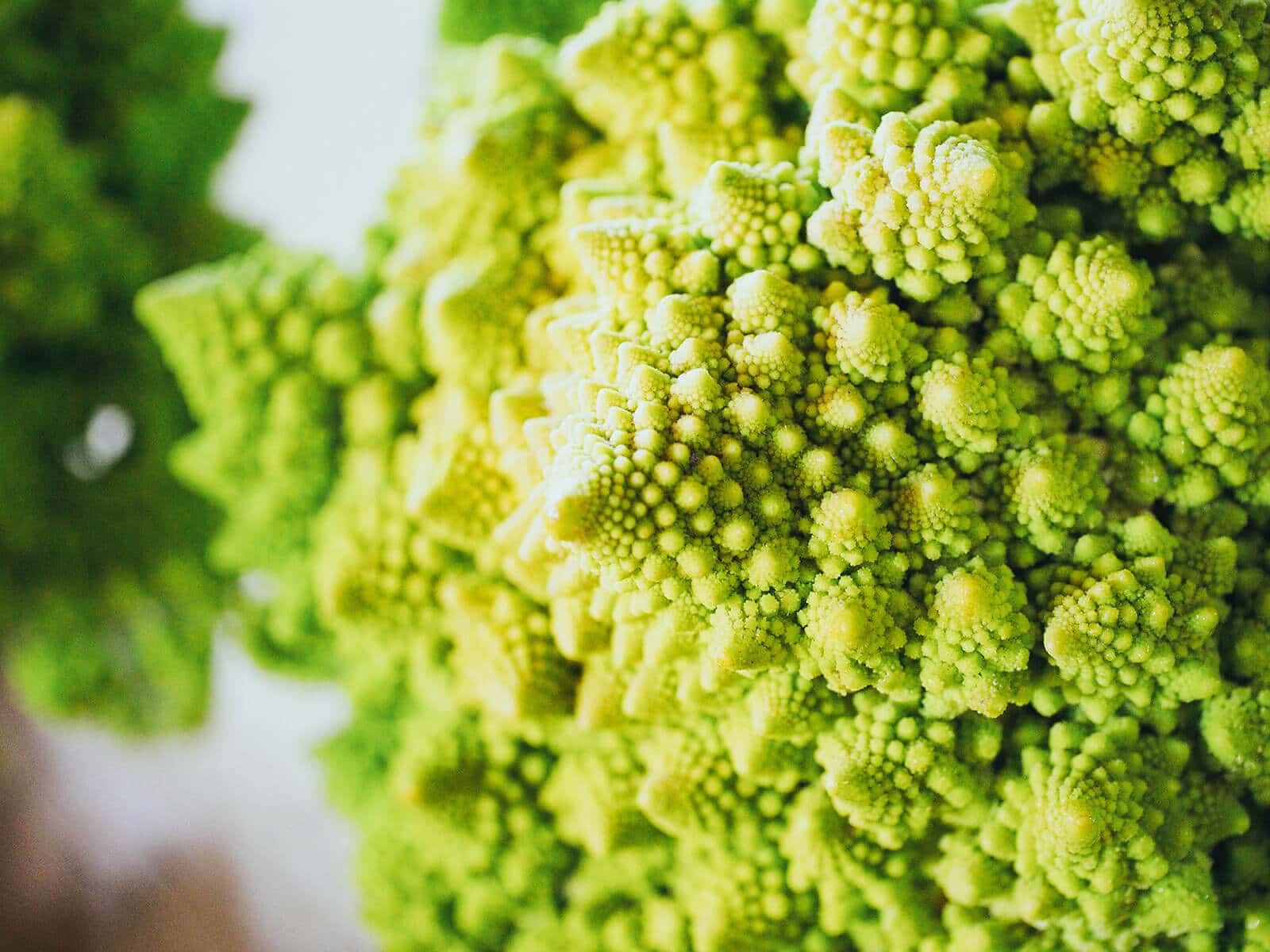
Where to find Romanesco brococli
If you don’t grow this one at home, Romanesco broccoli is typically found in better supermarkets, health food markets, and farmers’ markets from spring through early fall. Depending on the time of year, you can find full-sized heads or tiny heads that fit in the palm of your hand (these babies are usually the secondary broccoli heads that sprout).
But if you can’t source it locally, you can try an online natural food co-op like Azure Standard, which carries organic Romanesco broccoli all summer. It’s worth trying at least once!
How to cook Romanesco broccoli
Romanesco broccoli is grown and cooked like your run-of-the-mill broccoli or cauliflower, but its pointy fractals are too pretty to puree or dice into little chunks.
I love to roast or grill the heads whole and drizzle them with sauce (my favorites include a creamy feta dressing, balsamic vinaigrette, and carrot top salsa), and for special occasions I make the Roasted Romanesco and Broccolini Salad With Wilted Arugula from The No-Waste Vegetable Cookbook.
You can also cut your Romanesco broccoli into thick slices to make “steaks.” Since the vegetable has a mild flavor that takes on the flavor of whatever it’s cooked or served with, it’s especially good with a spicy buffalo sauce, chimichurri, sesame-soy dressing, or some other savory, tangy, or bold condiment.
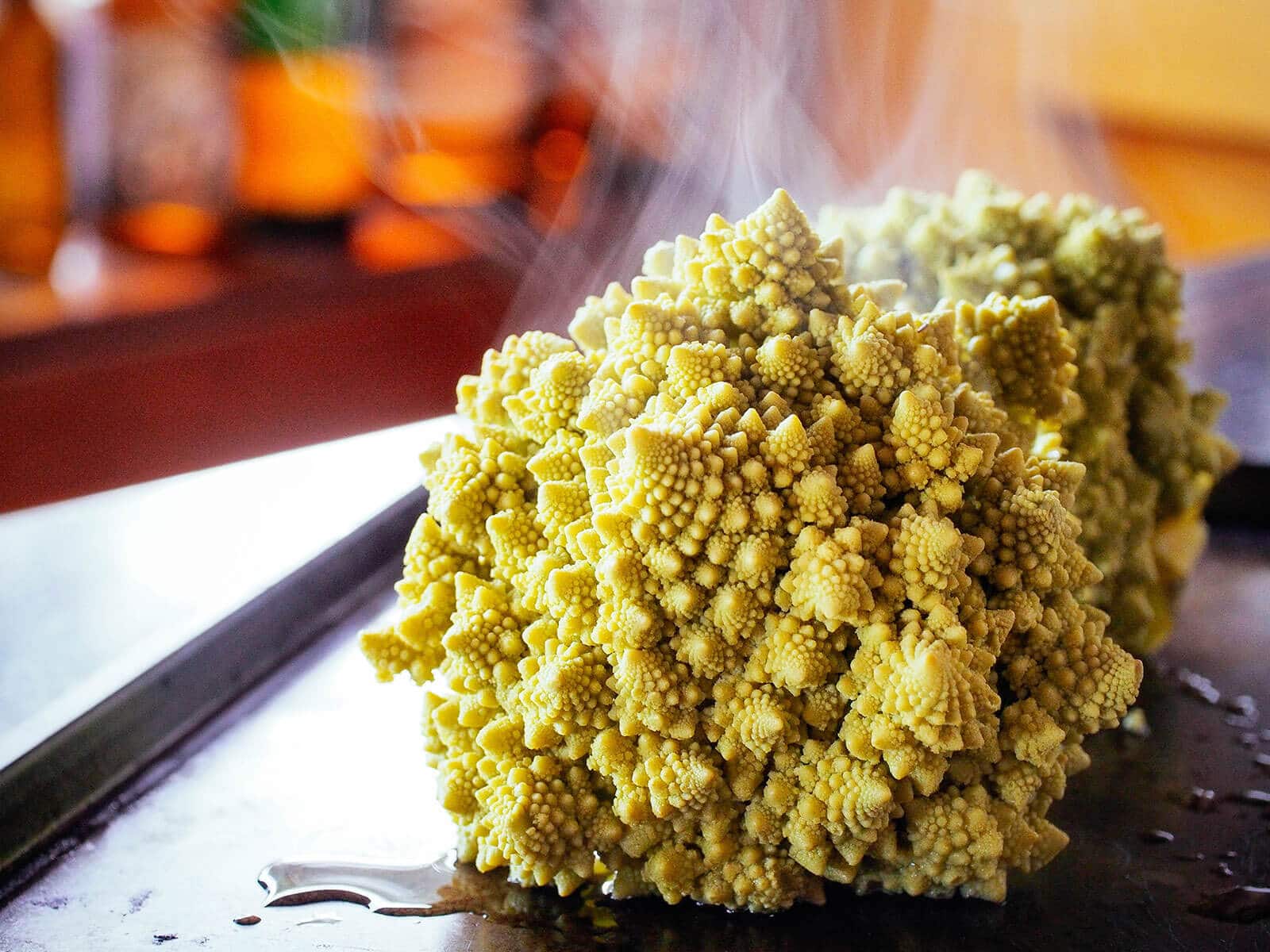
This post updated from an article that originally appeared on April 25, 2012.
View the Web Story on Fibonacci fractals in Romanesco broccoli.


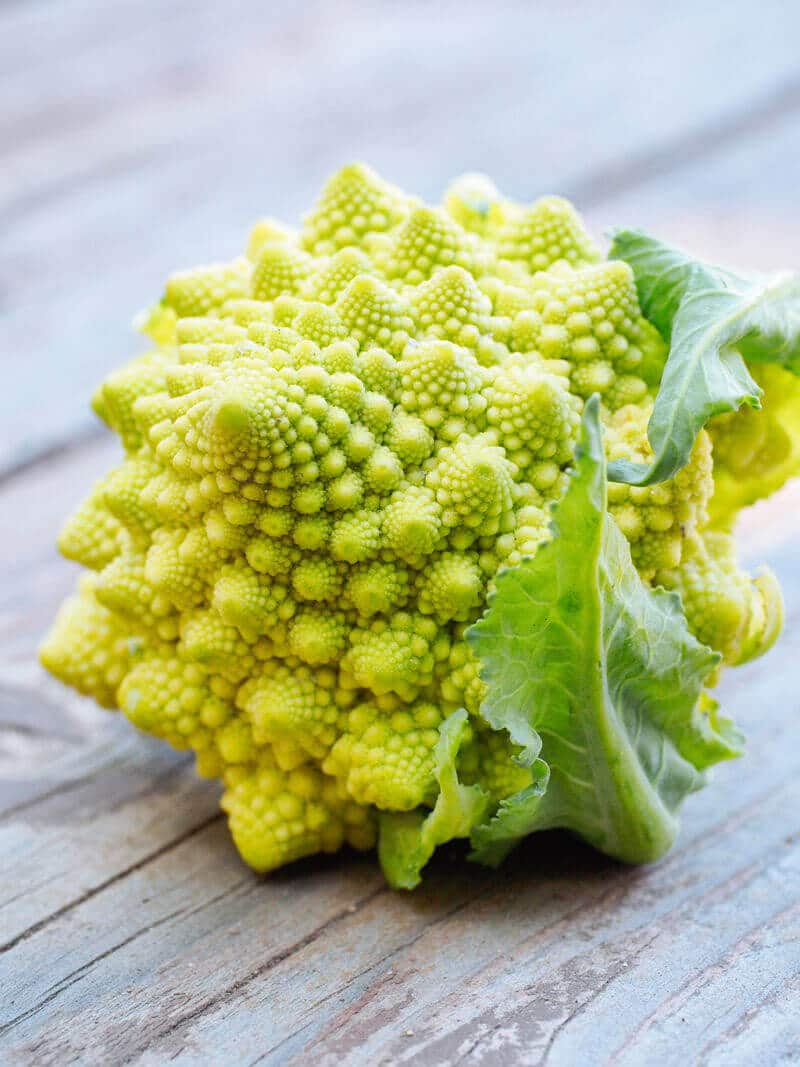













Sure, it is very cool, but true Romanesco is not easy to grow successfully. Maybe you could write some tips for success?
Excellent site! Very nice dedication to healthy and useful environment, and all the wonderful nanotech that nature and evolution selected for us. This information is excellent. I’ll be checking out your site to see if and when you start growing all of the recommendations of Paul Stamets on youtube. Definitely check out his TED talk, if you haven’t already. He shows how you can grow many kinds of cancer and heart-disease preventing mushrooms that also “close the nutrient loop” in your vegetable garden, making your vegetables grow much more vigorously, and contributing more to their chemical nutrient profiles.
Thanks. I’ve always been fascinated by mushrooms and hope to learn more about them one day.
If you’ve been considering joining the farm share produce pickup at my house and haven’t yet let me know, please do ASAP!! You get eight selections weekly of local, organic, single-farmer grown produce. STARTS WEDNESDAY!!! Click the link to see what is in season right now… the eight things will be selected from this list. “Look forward to Romanesco on the week of February 11th. Broccoli, Cauliflower, Cabbage and more!” (Romanesco is what looks like a cross between broccoli and cauli, as pictured below.)
just tried one. Lovely!
I love your explanation of the Fibonacci sequence. I read an article about it once and now I always see it in my garden, usually in the sunflowers. I think the article I read was in an “Awake!” magazine. It also mentioned that seashells display the same pattern. Just stumbled on your blog looking to see if I should eat the leaves of my broccoli that got started too late and didn’t produce heads. Thank you for the info! I’ll enjoy the rest of your site now and I’m going to bookmark it!
I love seeing the spirals in my Lemon Queen sunflowers!
Thanks for reading!
hi dear linda
i’m reza from iran i live in the north
i’m biotechnologist i have a farm that plant broccoli in it
like you i love to grow something that can make happy the peaple
Gardening is one of the greatest forms of therapy. 🙂
Wow, you are a cruciferous rock star! I’ve tried to grow them so many times, including the beautiful romanesca, but am always plagued by pests that I’ve given up.
I grow a lot of beneficial plants in the garden, so I don’t see as many pests anymore. Sluggo Plus and food-grade diatomaceous earth also work great, depending on what’s plaguing your garden. You can even try floating row covers to keep cabbage worms and other pests off your plants.